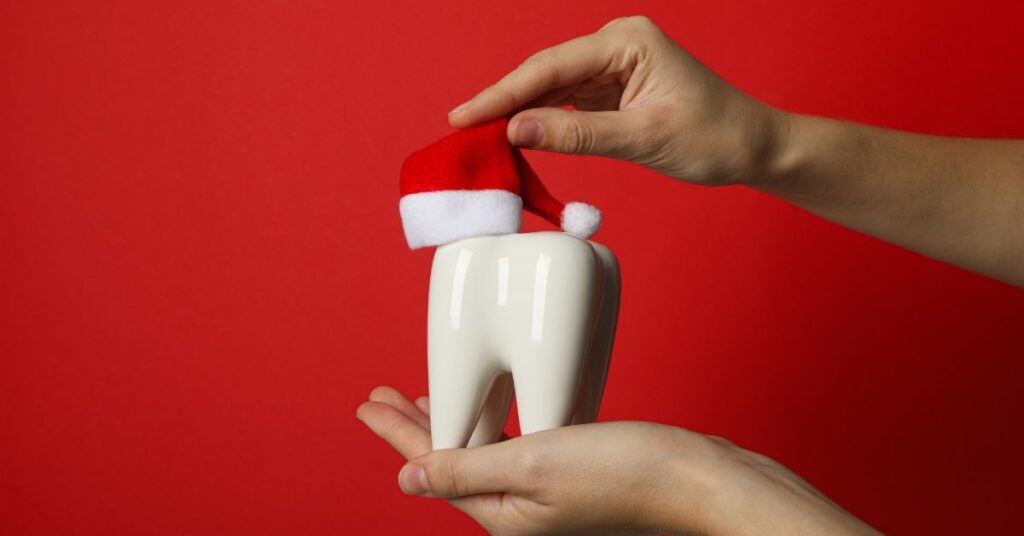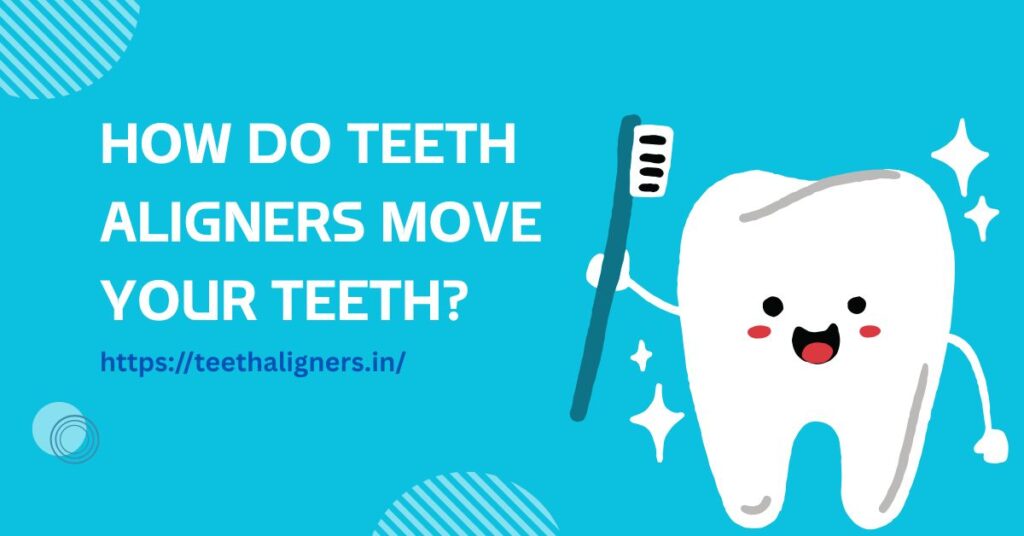Have you ever wondered how something as soft as plastic can move something as strong as your teeth?
It may sound odd at first, but it’s true—thin, clear trays known as Teeth Aligners can shift teeth into better positions without the wires and brackets used in traditional braces.
These aligners have become a popular modern dental solution. They’re smooth, nearly invisible, and can be taken out when eating or brushing.
But how do they actually work? This article breaks down the process in simple terms, helping you understand how these small trays make a big difference in your smile.
Table of Contents
ToggleWhat Are Teeth Aligners?
A Simple Overview
Teeth Aligners are clear trays made from smooth, medical-grade plastic. They’re designed to fit snugly over your teeth and gently push them into better alignment.
Each tray is custom-made for your mouth using digital scans or impressions, which means it’s built to match your smile and your treatment goals. Aligner Trays for Teeth can fix a variety of dental issues such as crowded teeth, gaps between teeth, and bite problems.
Because they are removable, they offer more flexibility than braces. You can take them out to eat, drink, brush, and floss—something that’s not possible with metal braces.
The Goal Behind Each Tray
What makes aligners effective is that each tray in the series is slightly different from the one before it. These small differences help apply controlled pressure to specific teeth.
As you move from one tray to the next, your teeth shift slowly, little by little. That’s why it’s important to wear each tray in the correct order and for the right amount of time.
How Do Teeth Aligners Move Teeth?
The Science of Tooth Movement
You might think your teeth are locked into your jaw, but they actually sit in soft bone that can reshape over time. This soft bone makes movement possible.
When a steady force is applied—like the pressure from aligners—the bone around the teeth begins to change shape.
This pressure causes one side of the bone to break down slightly, while the other side rebuilds itself.
This process allows the tooth to move safely to its new position. It’s a slow and natural change that takes place over weeks or months.
Step-by-Step Shifting
Teeth don’t shift all at once. Each aligner in your treatment series causes your teeth to move just a little bit—usually less than a millimetre.
After a week or two, your teeth will have adjusted enough for the next tray in the series to take over.
This step-by-step movement is safer and more comfortable than sudden shifts. By using a series of trays, your dentist can guide your teeth from where they are now to where they should be in a controlled and gentle way.
Consistency Is Key
For aligners to work properly, they need to be worn consistently—usually 20 to 22 hours a day.
That means you should only take them out for short periods, such as when eating or brushing.
If you forget to wear them or leave them out too long, your teeth might not move as planned. Worse, they might even shift back.
Sticking to the daily wear schedule is one of the most important parts of a successful treatment. It keeps the pressure going and helps your teeth stay on track.
What Happens Inside Your Mouth?
How the Bone Reacts
When pressure is applied to a tooth, the bone around it begins to respond. On the side where pressure is applied, the bone breaks down slightly.
On the opposite side, new bone begins to grow. This process is called bone remodelling, and it allows the tooth to move safely without damaging the roots.
The slow, steady pace of this movement is what makes aligners safe. If the movement happens too quickly, it could harm the bone or teeth.
That’s why following your dentist’s timeline and wearing the trays correctly is so important.
Aligners and Pressure Points
Each aligner is designed to apply pressure in just the right spots. Some trays may focus on moving a single tooth, while others target groups of teeth.
The aligners use small pressure points built into the plastic to guide movement.
When you put in a new tray, you might feel some tightness or discomfort for the first day or two.
This is normal. In fact, it’s a sign that the aligner is doing its job and helping your teeth shift to the next stage.
How Long Does the Process Take?

Average Timeline
Most people wear aligners for six to eighteen months. The timeline depends on how complex your case is, how old you are, and how well you follow your dentist’s instructions.
Simple cases—like small gaps or minor crowding—might take just a few months. More involved issues can take over a year to fix.
Age can also play a role. Younger patients often respond faster to treatment, but adults can get great results too—it just might take a bit longer.
Regular Dental Check-Ins
During your aligner treatment, you’ll visit your dentist every few weeks. These appointments are quick and simple.
The dentist checks how your teeth are moving and gives you your next set of trays. If something needs to be adjusted, your dentist can update your treatment plan as needed.
These regular check-ins help keep everything on track and prevent issues from going unnoticed.
How Do Dentists Design Aligners?
Digital Scans and 3D Mapping
Before starting treatment, your dentist takes detailed scans or X-rays of your mouth. These images help create a 3D model of your teeth.
With special software, the dentist maps out how your teeth should move—step by step—until they reach the ideal position.
You may even get to see a preview of your new smile before treatment begins. This is often a fun and motivating part of the process.
Predictable Movement Over Time
Using the 3D model, a full set of trays is created. Each tray moves your teeth a little closer to the final result. When you follow the plan correctly, the process becomes predictable.
You move through the trays one by one, following the digital roadmap built at the beginning.
It’s a carefully managed system that helps you get the results you want without guesswork.
Real-Life Example
Student in India Fixes Crowded Teeth
A 20-year-old college student in India had trouble with crowded front teeth that made her feel embarrassed to smile.
She didn’t want metal braces and decided to try aligners instead. After getting digital scans, her dentist gave her 18 trays to wear over the next year.
She was disciplined and wore the trays exactly as directed—around 22 hours a day. In just 11 months, her treatment was complete.
Her teeth were straight, and her confidence improved. Now, she smiles freely at school and in photos without worrying about her teeth.
Benefits of Teeth Aligners
Why Many Choose Aligners
There are many reasons people prefer clear aligners over braces. They are nearly invisible, which means you can wear them without drawing attention to your mouth. They’re also removable, which makes eating and brushing easier.
Aligners are generally more comfortable, and you don’t have to deal with wires or brackets poking your gums. Plus, you often need fewer dental appointments, which is convenient for busy people.
A Growing Choice in India
More and more people in India are choosing clear aligners as their go-to method for straightening teeth.
With better access to advanced dental technicians , many clinics now offer digital scanning and aligner treatments.
This makes it easier and more affordable for people to improve their smiles without braces.
As awareness grows, aligners are quickly becoming the first choice for both teens and adults.
Conclusion
Straightening your teeth may seem like a slow and subtle process, but with Teeth Aligners, it’s guided and controlled every step of the way.
These trays work by applying steady pressure, which tells your body to gently reshape the bone around your teeth.
With time, patience, and daily wear, your teeth shift into better alignment—giving you a smile that looks and feels great.
If you’re thinking about this type of treatment, remember that wearing the trays as directed is just as important as the trays themselves. As more people in India explore aligners as a solution, it’s clear this method is changing the way we think about dental care.
To explore your options and start your own smile journey, connect with Teeth Aligners in India—a trusted name in digital aligner solutions and patient-focused care.

